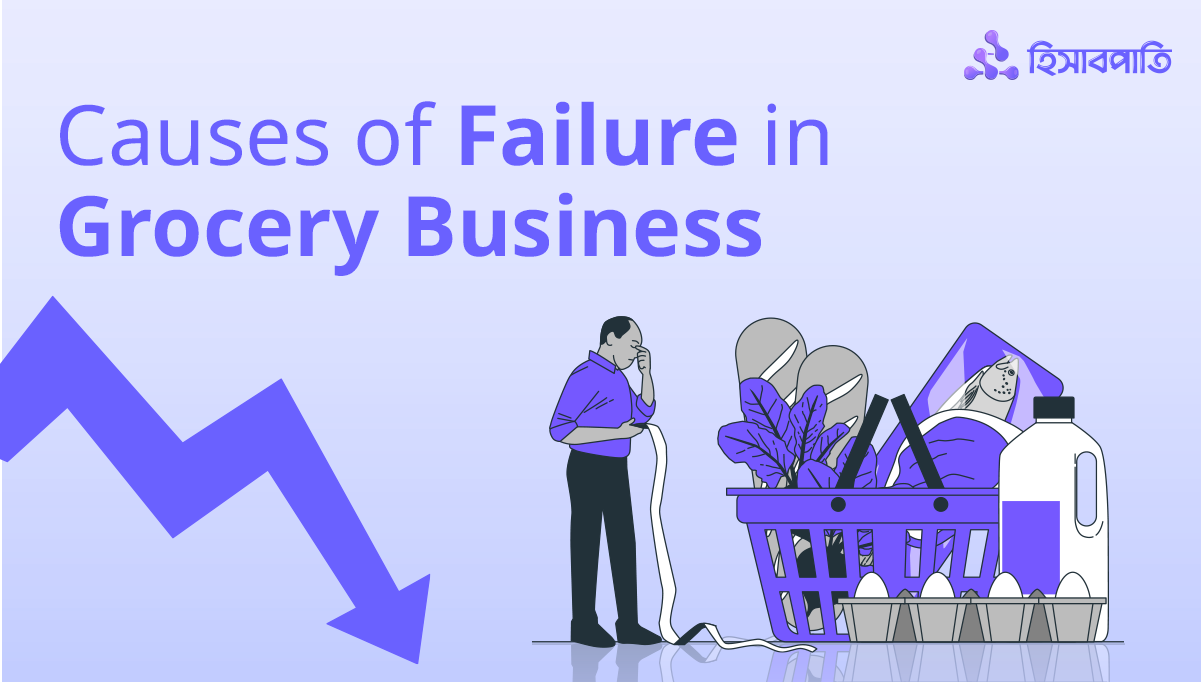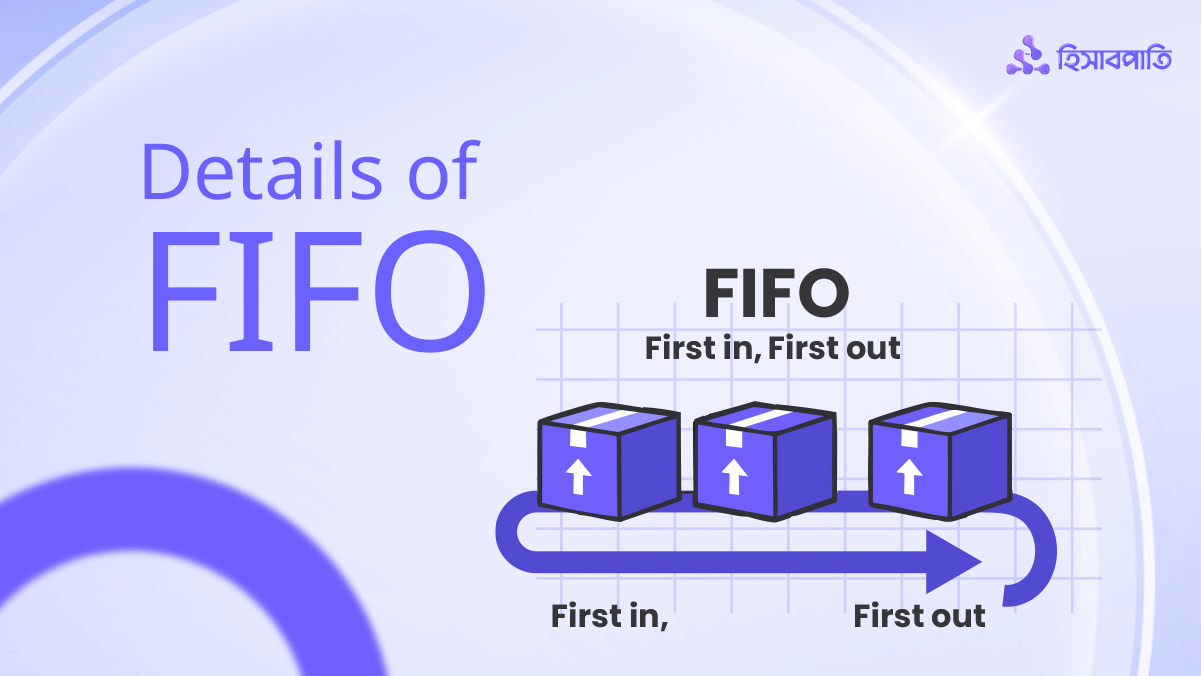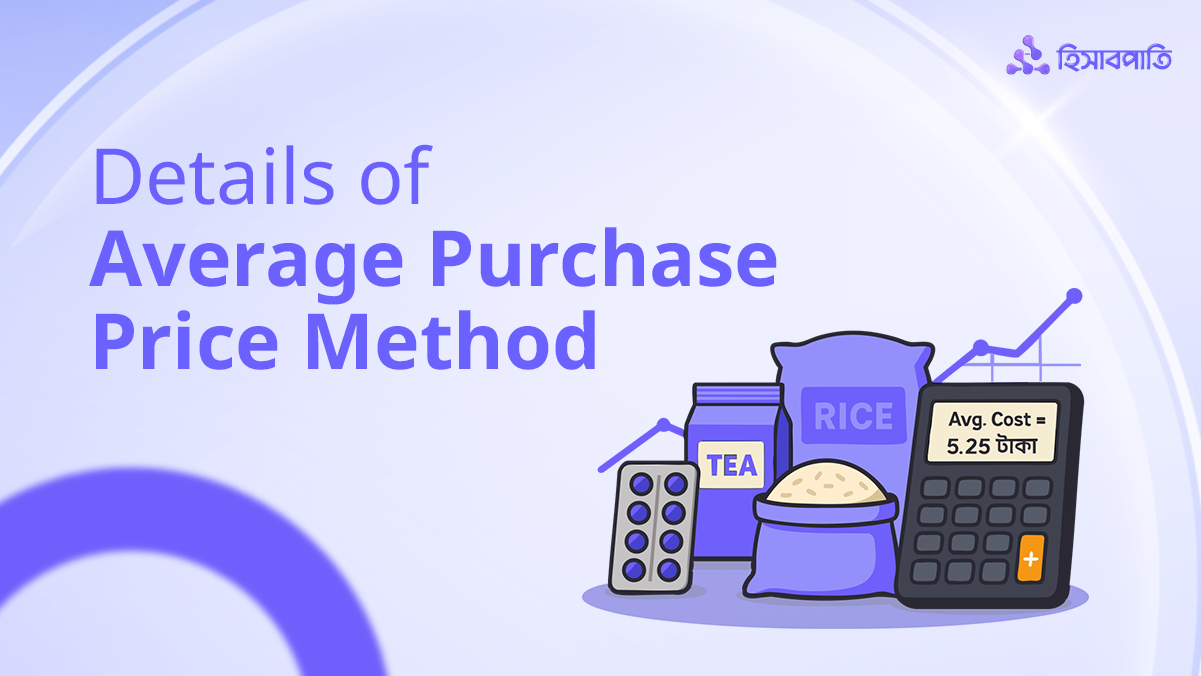In Bangladesh, one of the most common and popular forms of small business is the grocery store. Many still believe that opening a small grocery shop guarantees a steady income and a stable livelihood for the family. However, the reality is quite different. Profit and loss in the grocery business depend heavily on various strategies and proper planning.
Many people start a grocery store business but fail to make a profit. Some even shut down their shops within a few months. Why does this happen? That’s what we’ll try to understand today.
In this blog, we will discuss why grocery store businesses fail, how to solve these issues, and how to run a grocery shop profitably.
This blog contains-
Does a small business always mean a grocery store business?
When we talk about small businesses in Bangladesh, the first thing that often comes to mind is the grocery store. Whether it's at the corner of a neighborhood, inside an alley, or next to a market, grocery shops are a familiar sight. However, it's important to remember that a small business doesn't always mean a grocery store!
Now, apart from online grocery businesses, there are various promising small business ideas such as handicrafts, food delivery, online clothing sales, and more. If you want to start a small business, there are plenty of great opportunities beyond grocery stores. To learn more about different business ideas, keep reading.
4 Small Business Ideas: Start Now and Make a Big Impact!
Remember, the grocery store business is not for everyone!
Many people think that a grocery store means safe and guaranteed profit. But the reality is, to succeed in this business, one needs patience, planning, the ability to understand customer behavior, and proficiency in accounting. Simply having capital doesn't make someone a successful entrepreneur. Without a proper understanding of competition, fluctuating product prices, selling on credit, stock management, and other related aspects, the likelihood of failure in the grocery store business is much higher.
So, before starting any business, it's crucial to evaluate your skills, mindset, and plan accordingly. Because when running a grocery store, you need to pay close attention to factors such as product types, customer demand, store management, stock management, accounting, and more. Therefore, if necessary, you must learn more about:
Conquering Big Challenges: A Roadmap for Your Small Business
7 Reasons for Failure in Grocery Store Business and Their Solutions
To be honest, in Bangladesh, a grocery store is not just a business, but a traditional way of life! Many families in our society earn their livelihood through grocery stores. From childhood, we often see our fathers or uncles opening the shop in the morning, responding to customers throughout the day, and then closing the shop at night to do the accounting. This image is so common that many think it's an easily accessible business. However, this very thought often becomes the reason for failure.
1. Lack of proper planning
Many people start a grocery store without any kind of planning. They begin the business without thinking about the location, the type of products, daily targets, and other essential factors. Sometimes, we see 5 to 7 grocery stores popping up in the same alley, leading to increased competition and, in some cases, losses for all involved.
Solution:
Before starting the business, conduct market analysis, competitor analysis, and understand customer demand to plan effectively. Use the popular SWOT analysis (Strength, Weakness, Opportunity, Threat) as a strategy for your business. By setting clear goals and following a structured plan, the risk of failure will decrease by 80% to 90%.
2. Starting a business with insufficient capital
Many people borrow money or spend all their savings to start a store, but when sales are low in the first few months, they become discouraged. Even if there is no income in the early stages of the business, expenses continue. To manage rent, electricity bills, employee wages, and other costs, sufficient capital is required.
Solution:
Before starting the store, make sure to have enough funds to cover at least 6 months of expenses. Additionally, you can use accounting apps to track costs, profits, and losses. Many small business owners in Bangladesh using 'HishabPati' app & benefiting.
3. Choosing the wrong or bad location
Often, stores are set up in areas where there is a lack of sufficient customers. If a large supermarket or grocery store is nearby, it becomes difficult for the new store to survive. You must have the knowledge to understand such dynamics before choosing a location.
Solution:
Before setting up a store, conduct thorough market research in the area. Customer movement, population, competitors—everything matters. A store located in a densely populated area, near schools and colleges, or in a residential neighborhood tends to yield better results.
4. Stocking the same products and stocking outdated products
Many grocery store owners in Bangladesh are accustomed to selling the same type of products for a long time. They fail to understand the demand for new products. Some, driven by the temptation of higher profits, stock items with low demand. As a result, the stock remains unsold, leading to losses!
Solution:
Stock products based on sales trends. Keep track of how much of each product is sold. Offer regular discounts or promotions on certain items. Listen to the feedback of every customer who visits the store to understand their needs and preferences.
5. Poor customer service or unacceptable behavior
Many shopkeepers in Bangladesh still think, "Customers will come anyway!" But the reality is, customers now have many alternatives. If the shopkeeper is rude, the products are of poor quality, or the prices are high, customers will go elsewhere. Additionally, they may leave negative reviews about your store, discouraging other potential customers.
Solution:
Polite behavior with customers, service with a smile, and fair pricing are the three key factors that will help you stay in business. Additionally, maintaining a clean store, organizing products neatly, and having consistent opening and closing times are important. If you open the store at 7 AM one day and close at midnight, and another day open at 10 AM and close at 10 PM, you will lose customers.
6. Discrepancies in daily transactions and accounting
In the grocery store business, it's crucial to keep track of daily transactions to understand profits and losses. However, many shopkeepers in our country still rely on manual accounting with pen and paper, which is no longer considered a practical approach. It's essential to use a digital platform for accounting. Simply counting the money at the end of the day to determine if there’s a profit doesn’t work anymore. Now, it’s important to keep track of profits and losses, outstanding payments, stock, expenses, and more.
Solution:
Keep a regular record of daily income and expenses, outstanding payments, and stock. You can use a mobile app to track your accounts if needed. This will make it easier to analyze daily profits and losses and identify which areas are incurring the most costs.
7. Not using technology or fearing its use
Currently, many grocery store owners are making double the profit by doing online business. However, some are still operating in the old-fashioned way. By not utilizing home delivery, QR code payments, Facebook pages, and other modern tools, they are falling behind.
Solution:
Start using technologies like online orders, QR code payments, and digital cash management. This will help your business grow rapidly and boost your confidence. By doing online grocery business, you can expand your reach beyond the local market and sell on a larger scale.
8. The bad habit of offering credit to customers right from the start!
In the grocery store business, profits and losses are a matter for later, but many business owners start offering credit to customers right from the beginning. They fail to realize that if customers don’t pay the credit later, they won’t come back. Therefore, starting the bad habit of offering credit from the start is a huge mistake.
Solution:
In the beginning of your business, focus on good customer service and polite behavior, rather than offering credit. Customers today seek good products, courteous treatment, and excellent service. To them, the price is secondary.
How are you calculating profits and losses in the grocery store business?
Keeping an accurate record of profits and losses in a grocery store is the biggest strategy for a successful business. Many store owners fail to understand how much money they are earning each month, how much they are spending, and where they are losing. With proper accounting management, you will gain the following benefits:
- You will be able to know the daily sales volume.
- You will be able to analyze how much of each product is being sold.
- You will be able to adjust product prices by analyzing profits and losses.
- You will be able to easily track customer outstanding balances.
Currently, there are many accounting apps or software available that allow you to easily analyze profits and losses in your grocery store business. This saves time and reduces the risk of incorrect accounting.
Although the grocery store business is extremely popular in Bangladesh, it is not easy. The success of a grocery store depends on your planning, location, customer service, and accounting management. Proper planning and the use of modern technology will help you become a successful entrepreneur. Therefore, simply opening a store is not enough; you need to know business tips, master strategies, and take timely actions. If you identify and address the main causes of failure in your grocery store business, your business can also become a successful example!
Demo - View this & start your journey with HishabPati in three simple steps!
- Step 1: Sign up on HishabPati
First, visit the HishabPati website and create an account for your business. Alternatively, download hisabpati app from google play store and register. Registration in HishabPati is quite easy & complete free.
- Step 2: Set up your company
After signing up, first set up your business profile by providing the necessary information as the owner. Then, set up essential business aspects such as inventory, units, purchases and sales, outstanding balances, invoices, and transactions. After that, start updating daily transactions.
- Step 3: Enjoy the various features of HishabPati
After starting to keep business accounts on HishabPati, make use of the necessary and unique features, such as invoicing, barcode scanning, units, and expense management, among others.
Watch a demo video on YouTube in Bengali to understand the usage and features of HishabPati in detail.
Digital ledger for income and expenses – HishabPati demo.
HishabPati's subscription fee starts at just 99 Taka!
HishabPati is Bangladesh's easiest and most affordable accounting app. Its subscription fee is divided into monthly and annual terms, with three budget-friendly packages available.
- 01. Basic Package: The Basic package is completely free! This means you can try out the app without purchasing a subscription.
- 02. Premium Package: The monthly subscription fee for the premium package is just BDT.99. And there's a 17% discount on annual subscriptions! It will cost only 999 taka in a year!
- 03. Business Package: The monthly subscription fee for the Business package is just 199 Taka. Like the Premium package, the annual subscription also comes with a 17% discount, making the yearly cost only 1990 Taka.
Know about all features of packages today in details & choose your desired package. Good luck with your business!






